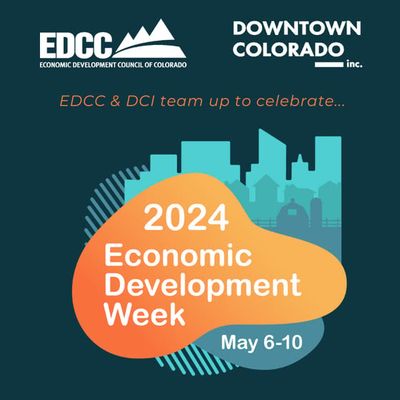SHOWCASING OPPORTUNITIES IN DOWNTOWN WITH BEN LEVENGER

On May 6th DCI welcomed Ben Levenger, President of Downtown Redevelopment Services, an organization that helps main streets in small communities create efficient plans and redevelopment projects for their downtown areas. Ben has worked on projects in 32 states over the past 5 years and has prepared over 100 downtown plans and strategic catalyst projects. He shared his strategies and best practices for proactively marketing downtowns and elevating underutilized and vacant properties to their best use.
What is a vacant property? Ben answers this question by emphasizing the importance of establishing the correct terminology so you can educate stakeholders and the public in a way that is inoffensive and trust building. This includes differentiating between categories of vacant properties as either underutilized or blighted. Underutilized buildings offer limited commercial or civic use but are still functional. Blighted buildings are those that are not salvageable. Both types of vacant properties have a negative impact on the surrounding community by reducing property values, damaging civic pride, discouraging business development, and deterring tourism. When factoring in lost wages, utilities, and taxes, vacant buildings cost the local economy a staggering estimated $214,000 annually.
Highest and Best Use
Ben outlines a multiple step process that can be implemented to determine the best use for buildings in downtown areas. The first step is to develop an Existing Conditions Analysis which will create a baseline for what is happening and why it is happening. He explains that it identifies the “who, what, when, where, and why” of the community. The second step is conducting a SWOT analysis. During this stage you identify functional infrastructure and unique assets that will emphasize the personality of the community and boost tourism. The third step is a GAP market analysis which illuminates business needs and services that are being underserved within the community. Ben explained that this type of analysis can be summarized by simply asking the question “what do you leave town to go get?”. The information gathered during the first two steps will assist with determining the right businesses and services for each community.
It is also important to thoroughly understand the legislative and regulatory landscape. Ben explained that “red tape” doesn’t typically deter developers as long as there is a clearly outlined process and all the necessary materials are readily available. This includes up to date zoning maps, development codes, and design guidelines. Using a delineated approach will also serve to build trust since developers and property owners are concerned with minimizing risks associated with each project. A Property Assessment and Inventory should also be included to detail the conditions of the properties, ownership, and pending plans. This will foster working connections with residents and assist them with actualizing each step of future projects. Finally, KPI’s can be used to measure impact and collect key statistics about the community, such as the number of jobs being created and retained, which civic spaces are being activated, and the exact amount of space being underutilized.
How to market the right style of development
Ben explains that development is not just about profitability and the goal should be to create civic minded building scenarios that are impactful to the community and make it a better place to live. This vision can be realized through using the correct marketing tools to make the development process as efficient as possible. Ben recommends using Developer Due Diligence Reports to condense the data that has been collected throughout the course of the project to a palatable single page summary. Proformas should also be used for vacant properties to create a plan for the best way to utilize the space. These reports save an average of 6-9 months off the development acquisition process. Developer packages are another effective marketing tool that can be used to solicit specific services. These are typically around 5-8 pages in length and include data visualization to deliver the information in a more appealing way. Lastly, organization and accountability are key to making your marketing strategy successful, so utilizing a SPOC (single point of contact), flowcharts, and timelines will add the structure necessary to narrow the attention to each specific goal.
Need additional resources? The American Rescue Plan provides resources for many of the recommendations that Ben outlined in his presentation. For more information on the specific types of relief included in the plan click HERE.





